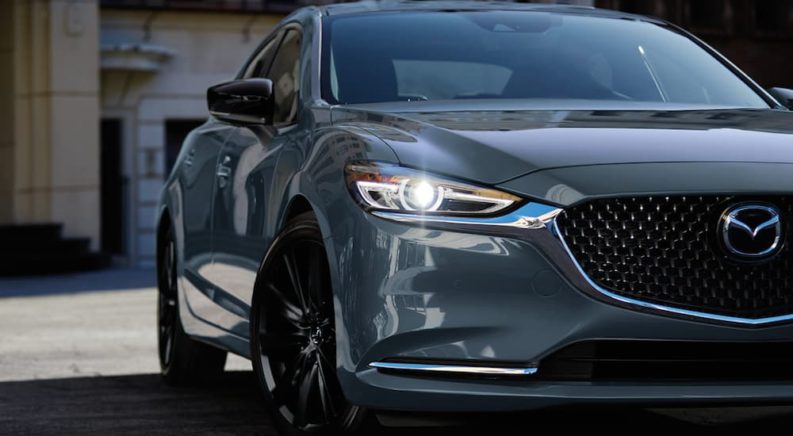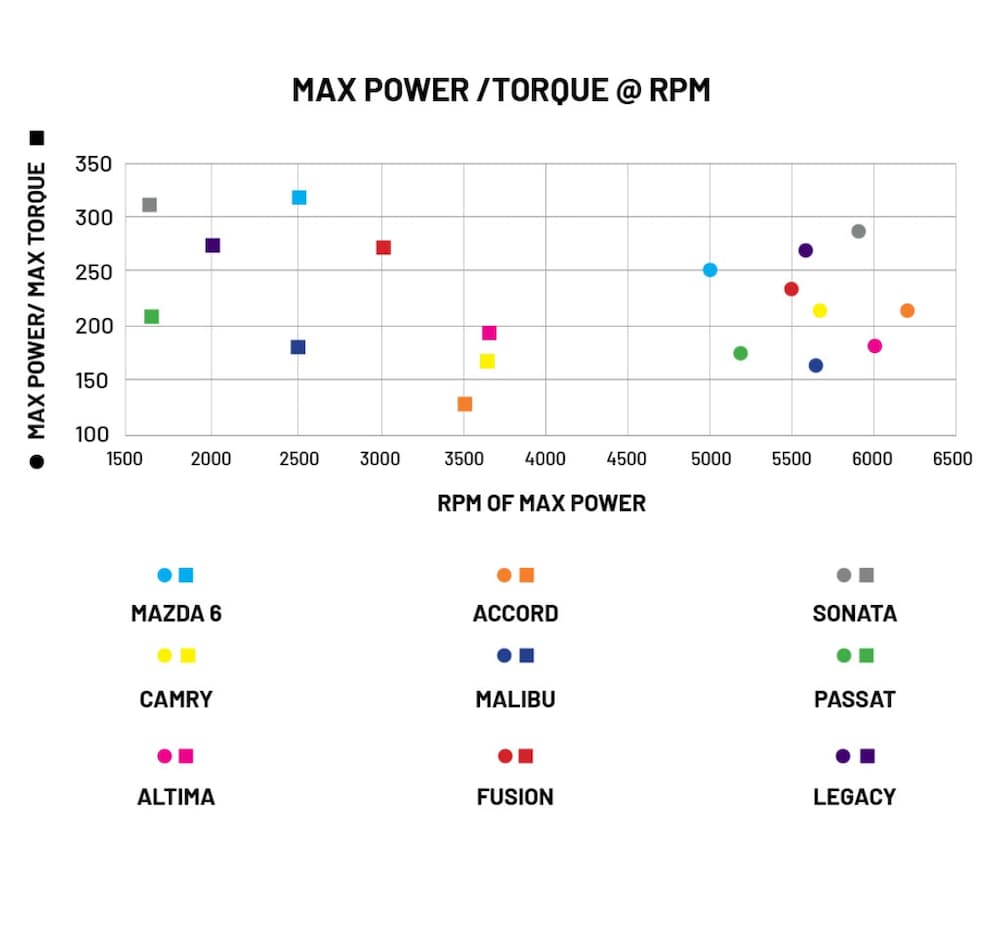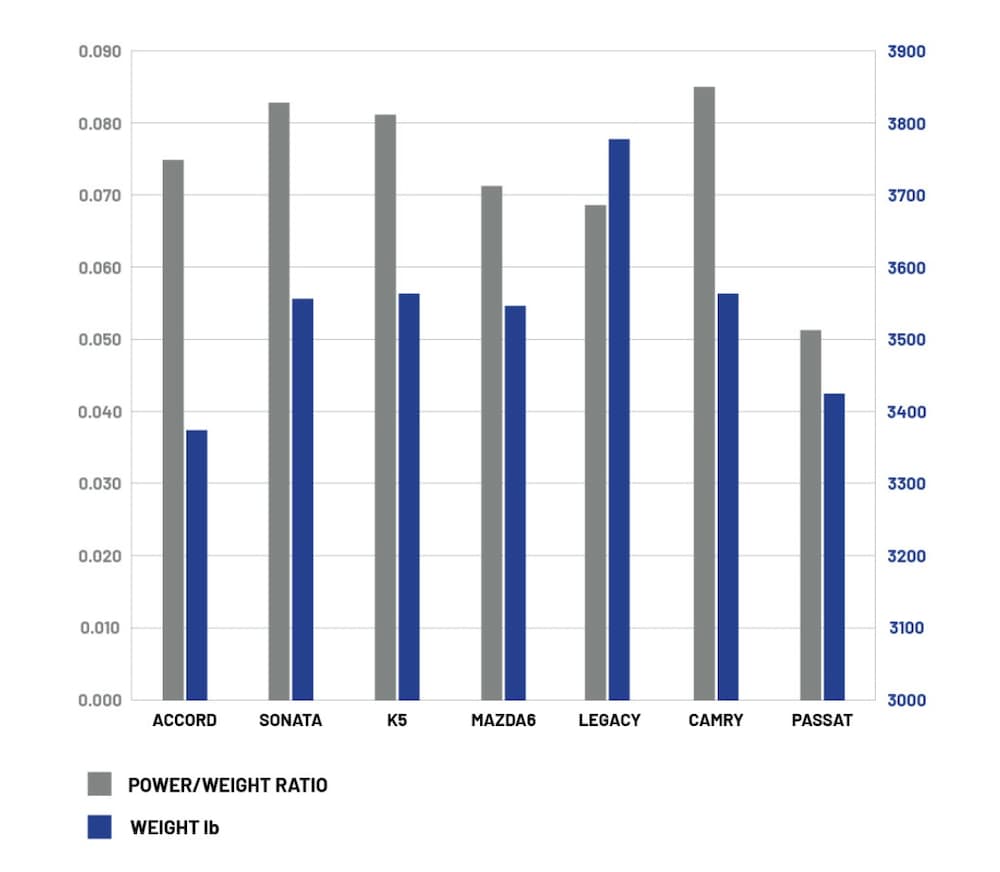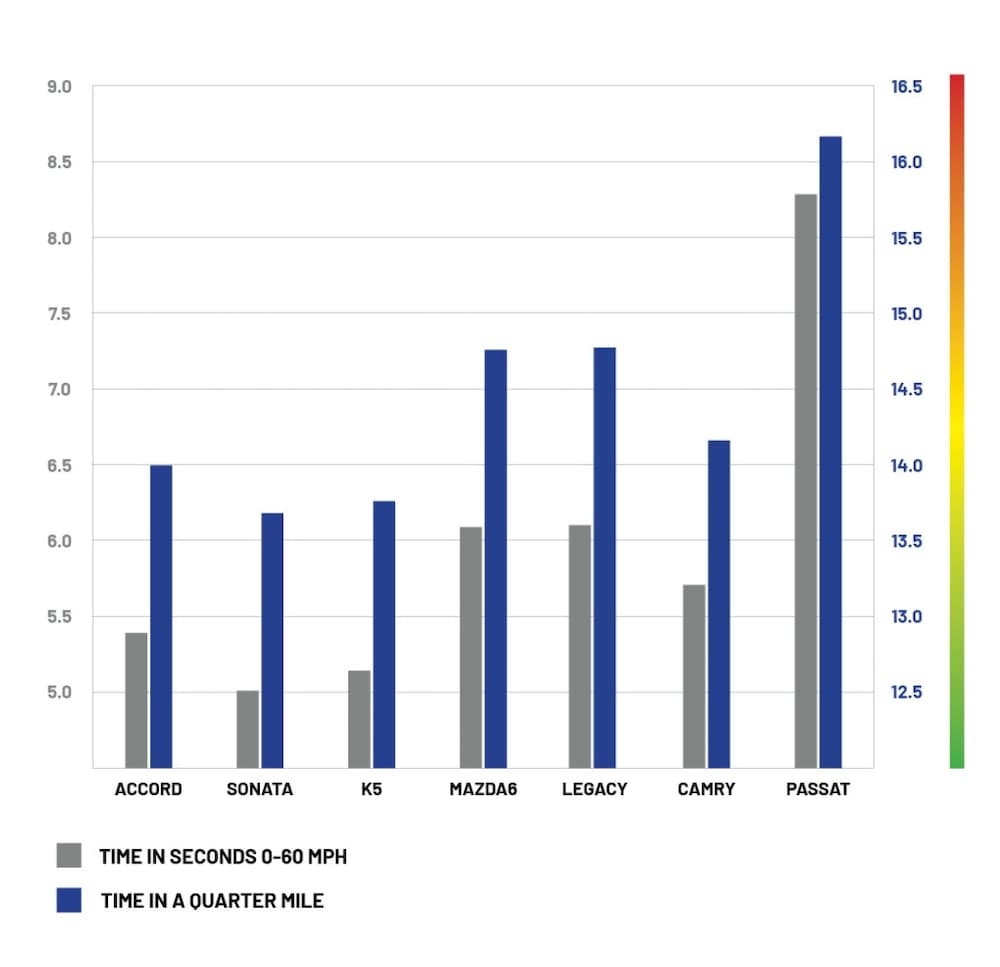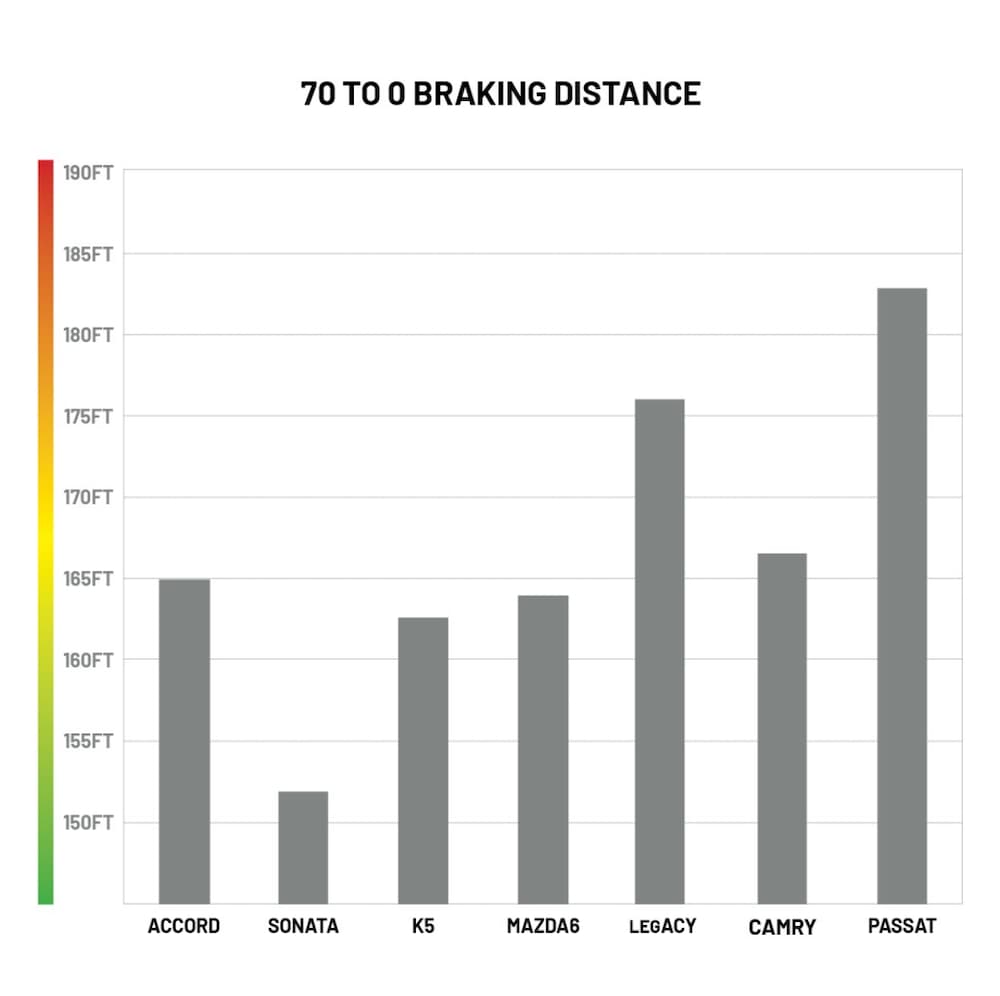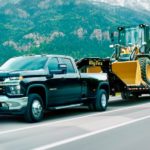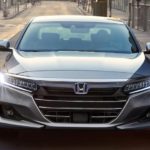Once the pinnacle of automotive competition, the midsize sedan segment currently takes a passably comfortable back seat to the pickup truck and crossover segments. The rising interest in crossovers has led American automakers to pull out of the segment entirely. The Ford Fusion, Chrysler 200, and Dodge Avenger have all bowed out, leaving the aging Chevy Malibu and VW Passat as the only non-East Asian entries to the market (both of which are rumored to be discontinued in 2023).
Yet, among the Japanese and Korean brands, the competition remains fierce. Every car targets families who are looking for an affordable, reliable daily commuter; they jockey for the status of having the most comfortable ride, the best safety and entertainment tech, and the highest fuel efficiency for the best price to earn your business. Performance in terms of acceleration, handling, and overall engagement is generally a secondary consideration – unless you are talking about the 2021 Mazda6.
With the all-new Kia K5 GT, the Hyundai Sonata N-Line, and competitive powertrains from Subaru, Toyota, and Honda, there’s plenty here for driving enthusiasts to get excited about, but the Mazda6 remains a proven performance favorite. The gap between these economy models and German luxury cars is closing by the year, taking the compromise out of a high-trim economy car purchase. But few models (if any) exemplify this as well as the Mazda6, which can approach $40,000 but includes all the style and tech features an average driver could want. For nearly 20 years, the Mazda6 has exemplified Mazda’s “Zoom Zoom” spirit in the midsize segment, and fans have often rated it higher than best-selling titans like the Toyota Camry and Honda Accord.
It’s that “Zoom Zoom” spirit that we’re going to dig into a little bit today. There’s a lot that the 2021 Mazda6 does well, including being named an IIHS Top Safety Pick+ and making features like radar cruise control standard across the board while also looking better than any midsize economy car has a right to look. But the pride of a Mazda is its performance, particularly its handling. I wondered if that could be quantified by examining how the 2021 Mazda6 fared in standard testing compared to its competition – so that’s what I’ll attempt to do here. With that said, let’s dig in!
The Competition
In 2021, the mass-market midsize segment nominally consists of the following models:
- Chevy Malibu
- Honda Accord
- Hyundai Sonata
- Kia K5
- Mazda6
- Nissan Altima
- Subaru Legacy
- Toyota Camry
- Volkswagen Passat
The vast majority of all these midsize sedan models are purchased as commuter cars and come with efficient but underwhelming four-cylinder engines. However, today we will be focusing on the performance side of things, and we will be comparing how they stack up when equipped with their more powerful optional engines.
Most of the upgraded engines are 2.0L or 2.5L turbocharged inline-fours (including the Mazda6, which offers a 2.5L turbo under the hood). However, the Toyota Camry stands out for continuing to offer a naturally-aspirated 3.5L V6, and the Subaru Legacy boasts a unique 2.4L turbocharged Boxer-four. The Legacy also stands out for being the only one of these midsize sedans to have all-wheel drive for its performance variant.
Unfortunately, none of these cars are available with a six-speed manual transmission, although the Mazda6 comes closest with a traditional six-speed automatic. The others mostly offer eight-speed, nine-speed, or ten-speed automatics, although the two Korean models use an eight-speed dual-clutch transmission and the Nissan Altima and Subaru Legacy have continuously variable transmissions.
Brute Force
The first performance metric anybody thinks about, if it isn’t the 0-60 mph time, is engine power output. My perception is that fewer people care much about the torque, and fewer still about the engine speed (rpm) at which those maximum numbers are achieved. But each is important! Most drivers live in the 1000 – 3500 rpm range, allowing their automatic transmissions to upshift at will – and many probably don’t realize that they never experience their engine’s full power in the process! Such drivers benefit much more from low-end torque than peak horsepower.
Low-rpm torque is generally the result of a turbocharger or a high-displacement engine, so it’s no surprise that the 2.5L turbo in the Mazda6 does well in this metric. In fact, it leads the pack, and none of its competitors can match its impressive 320 lb-ft of torque. Its rev range for peak torque is middle-of-the-pack at 2500 rpm, but that’s still well within normal driving parameters, meaning you’ll experience the most acceleration your Mazda6 has to offer every single day. If you do like to rev out your engine to the limit, then the Mazda6 falls towards the back of the pack, but having peak horsepower at 5000 rpm makes its power the most accessible of any midsize on the market.
If you are a performance enthusiast, you probably understand that raw engine power alone is not the full story. What really matters is the power to weight ratio. For the uninitiated, the power to weight ratio translates directly into acceleration and handling – a change of 500 pounds could mean a full second or more in the 0-60 mph time. Simply put, more weight slows a car down, so a lighter car with a higher power to weight ratio can be expected to be quicker in a straight line, even if it has less total power. The fact that the Mazda6 is among the lighter cars in this comparison likely plays a role in its driver-friendly reputation.
Adrenaline Rush
With its solid horsepower, torque, and power to weight ratio, the 2021 Mazda6 can be expected to stack up well in terms of acceleration, and it does. While it’s lower horsepower does handicap it slightly when it comes to raw acceleration, it is far from out of the running. On the quarter-mile it is just a hair over a second slower than the fastest car in the segment, which is a small enough difference that you are unlikely to feel it on the street. When compared to more common vehicles like the VW Passat, the Mazda6 demonstrates just how powerful it is.
The counterpart of acceleration is stopping power – you don’t want to go fast if you can’t stop safely. The Mazda6 features 12.6” ventilated front disc brakes, which are a little larger than average, but the rear 10.9” brakes are nearly the smallest in the segment. Despite this, the 164 ft required to stop from 70 mph is among the best in the segment and well ahead of most of the competition. A few feet might not sound like much, but every inch counts when the brake pedal hits the floor. The much heavier weight of the Legacy means that it falls far behind the Mazda6 in this regard. However, driver reviews indicate that the braking feel of the 2021 Mazda6 is surprisingly soft, even if they do perform better than expected.
Twists and Turns
The corners are where the Mazda6 is expected to shine. Interestingly enough, the 2021 Mazda6 scores a rather unexceptional turning circle of 36.7 ft and a slightly disappointing 0.82 g of road holding on the skidpad. However, this is likely the result of the tires, which are reportedly SUV-spec all-seasons while many competitors offer the option of summer tires. If you want to push your Mazda6, investing in a quality set of summer tires is probably a good idea (and should also improve acceleration and braking to boot).
But when it comes to handling, drivers often comment on the complete absence of torque steer on the Mazda6 – a particularly significant achievement given its best-in-class level of low-end torque. In addition, the relatively heavy and evenly weighted steering is widely praised and gives surprisingly good feedback to the driver. Isolation struts, a hard-mounted steering rack, and fluid-filled control arm bushings contribute to improved road feel at the wheel and reduced NVH (noise, vibration, and harshness) overall.
Another observation in Mazda’s favor is its exceptional traction control system. While many brands have very invasive TCS that will cut power entirely as soon as it senses wheel slip, Mazda’s system is fine-tuned to a very high level. When the torquey engine overwhelms the tires and traction is lost, the electronics system gradually reduces power to regain control and gradually restores power to maintain it. The Korean sedans are notorious when it comes to poor traction management, and it takes a highly skilled driver in good conditions to make them live up to their paper performance.
Best in Class?
Styling, tech features, and safety aside, from here, it looks like the 2021 Mazda6 is not the only midsize sedan for the driving enthusiast to consider. The Hyundai Sonata and Kia K5 have it out-paced on the straights for sure, but the excellent torque and power availability keep the Mazda6 feeling as zippy, especially at highway speeds. Still, there seems to be nothing in the numbers that clearly demonstrates why the Mazda6 is a consistent recommendation by reviewers who emphasize driving feel. Perhaps the driving spirit of the Mazda6 is unconstrained by metrics and defies objective quantification, instead insisting that curious drivers slip behind the wheel to experience it for themselves. Mazda’s “Zoom Zoom” spirit does not, after all, reside at a desk.

